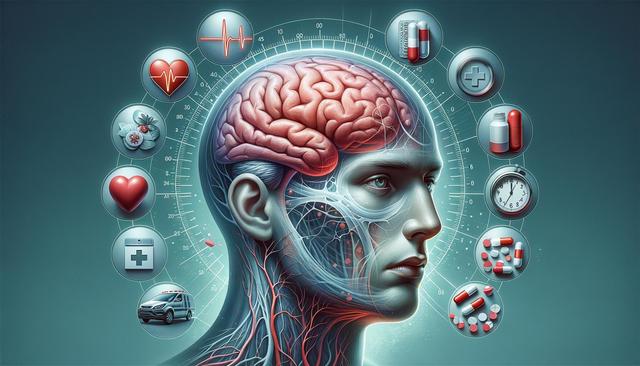Understanding Stroke as a Silent Threat
Stroke is often referred to as an invisible disease, not because its symptoms can’t be seen, but because its effects can linger beneath the surface long after the initial event. Many individuals who experience a stroke may appear physically well but suffer from cognitive, emotional, or sensory impairments that are not immediately visible. These include memory issues, trouble with concentration, and emotional instability. This hidden aspect can lead to misunderstanding or underestimation of a stroke survivor’s condition by others, making support and awareness all the more crucial.
There are two main types of stroke: ischemic, caused by a blockage in an artery, and hemorrhagic, caused by a ruptured blood vessel. While the signs of a severe stroke might be evident—such as facial drooping or speech difficulties—milder strokes might be mistaken for other issues or ignored entirely. In these cases, the stroke’s impact may only be discovered much later, increasing the risk of further damage or another stroke.
Recognizing the Key Signs of Stroke
Identifying a stroke quickly can make a major difference in the outcome. Medical professionals emphasize the importance of the acronym FAST, which stands for:
- Face: One side of the face droops when asked to smile
- Arms: One arm drifts downward when both are raised
- Speech: Speech is slurred or strange
- Time: Time is critical—call emergency services immediately
Other signs may include sudden vision problems, dizziness, severe headache, or trouble walking. While these symptoms may vary depending on the area of the brain affected, any sudden and unusual physical or mental changes should be treated as a potential emergency. Importantly, even a temporary symptom, known as a transient ischemic attack (TIA), can be a warning sign of a more serious stroke to come.
Common Medications Used After Stroke
After the immediate treatment phase, stroke survivors often rely on a range of medications to support recovery and reduce the risk of future strokes. These medications may include:
- Antiplatelet drugs to prevent blood clots
- Anticoagulants for patients with certain heart conditions
- Blood pressure medications to manage hypertension
- Cholesterol-lowering drugs to reduce artery buildup
Each medication plays a role in stabilizing the patient’s condition and preventing recurrence. Patients may also receive medications to treat symptoms like muscle stiffness, depression, or seizures. It’s important that stroke survivors work closely with their healthcare providers to ensure that their medications are appropriate and adjusted as needed. Adherence to prescribed drug regimens significantly improves long-term outcomes.
Reducing the Long-Term Impact of Stroke
While a stroke can have lasting effects, there are multiple ways to reduce its impact. Rehabilitation is a key part of the recovery process and typically includes physical therapy, occupational therapy, and speech-language therapy. Early and consistent rehab can greatly improve mobility, communication, and independence. Additionally, support from family, friends, and caregivers plays a vital role in emotional recovery and resilience.
Stroke prevention is just as important. Preventive strategies include:
- Managing chronic conditions like diabetes and high blood pressure
- Maintaining a healthy diet and weight
- Avoiding tobacco and limiting alcohol
- Engaging in regular physical activity
It’s also helpful to monitor for signs of depression or anxiety, which are common after a stroke. Mental health support, whether through counseling or medication, can improve overall quality of life and aid in the healing process.
How Long Do Stroke Effects Last?
The duration of stroke effects can vary widely depending on the severity of the stroke, the area of the brain affected, and the timeliness of treatment. Some individuals recover within weeks or months, while others may live with long-term or permanent disabilities. Recovery is often most rapid in the first few months, but meaningful improvements can continue for years with consistent therapy and support.
Factors that influence recovery time include:
- Age and overall health before the stroke
- Speed of medical response and rehabilitation
- Presence of other medical conditions
- Family and community support
There’s no fixed timeline for stroke recovery. Some people regain full function, while others adapt to new ways of living. The invisible effects, such as fatigue or memory lapses, may persist even when physical recovery appears complete. Recognizing these ongoing challenges is essential to provide appropriate care and understanding.
Conclusion: Understanding and Responding to Stroke
Stroke is a complex condition that can present both visible and hidden challenges. While it may not always be fully visible from the outside, the impact on a person’s life can be profound. Recognizing the signs, acting swiftly, and supporting recovery through medication and therapy are all crucial steps in minimizing long-term damage. Awareness and education can help not only in preventing strokes but also in supporting those who live with its effects. Whether you’re a caregiver, a survivor, or someone looking to lower your risk, understanding stroke is a vital part of promoting better health and resilience.


